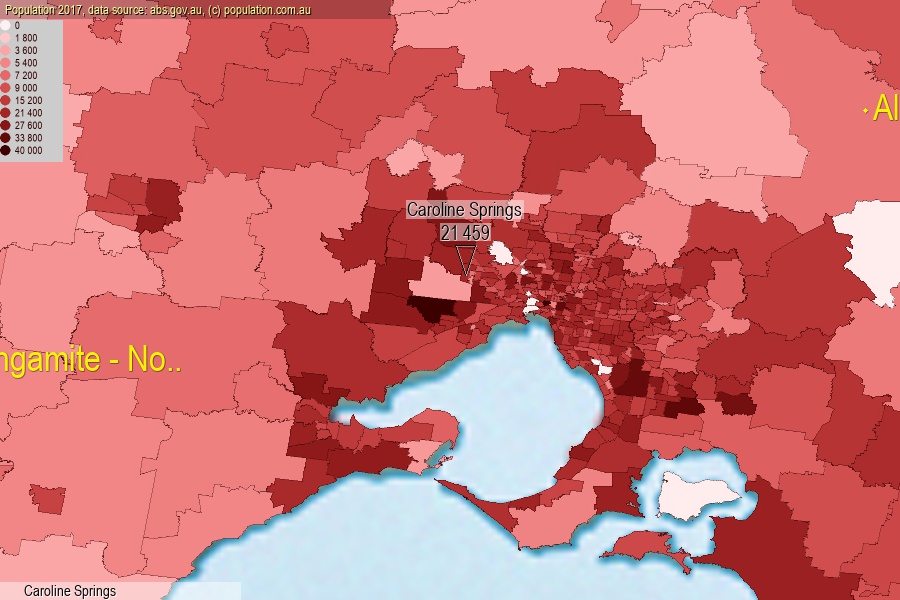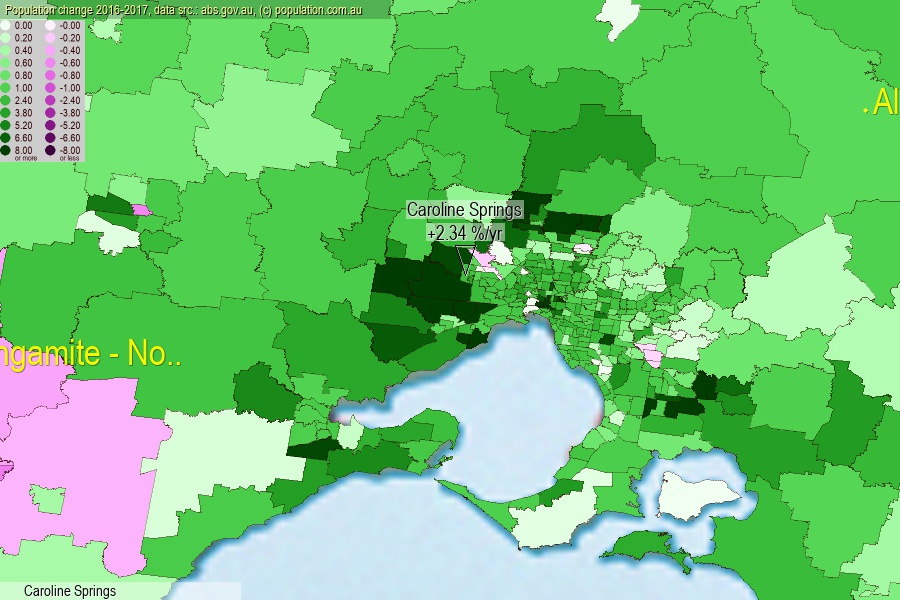 population.com.au
population.com.auLast official estimated population of Caroline Springs (as Statistical Area Level 2) was 21 459 people (on 2017-06-30)[2]. This was 0.09% of total Australian population and 0.334% of VIC population. Area of Caroline Springs is 7.00 km², in this year population density was 3 065.57 p/km² . If population growth rate would be same as in period 2016-2017 (+2.34%/yr), Caroline Springs population in 2025 would be 25 824. [0]



Click to enlarge. Caroline Springs is located in the center of the images.
Population [people], population density [p./km²] and population change [%/year] [2]
View borders » (new window) [4]
[2001-2002] +53.48 %/Yr.
[2002-2003] +37.46 %/Yr.
[2003-2004] +24.92 %/Yr.
[2004-2005] +17.92 %/Yr.
[2005-2006] +15.64 %/Yr.
[2006-2007] +8.68 %/Yr.
[2007-2008] +7.41 %/Yr.
[2008-2009] +8.70 %/Yr.
[2009-2010] +11.76 %/Yr.
[2010-2011] +8.32 %/Yr.
[2011-2012] +5.71 %/Yr.
[2012-2013] +5.42 %/Yr.
[2013-2014] +3.29 %/Yr.
[2014-2015] +2.27 %/Yr.
[2015-2016] +2.90 %/Yr.
[2016-2017] +2.34 %/Yr.
[0] Calculated with linear interpolation from officially estimated population
[1] Read more about SA2 and Australian Statistical Geography Standard (ASGS) on abs.gov.au
[2] Population data from Australian Bureau of Statistics (Population and density: 2017; change: 2016-2017)
[3] Digital Boundaries: Australian Statistical Geography Standard (ASGS) 2016.
[4] Border coordinates are simplifyed using Ramer-Douglas-Peucker algorithm.